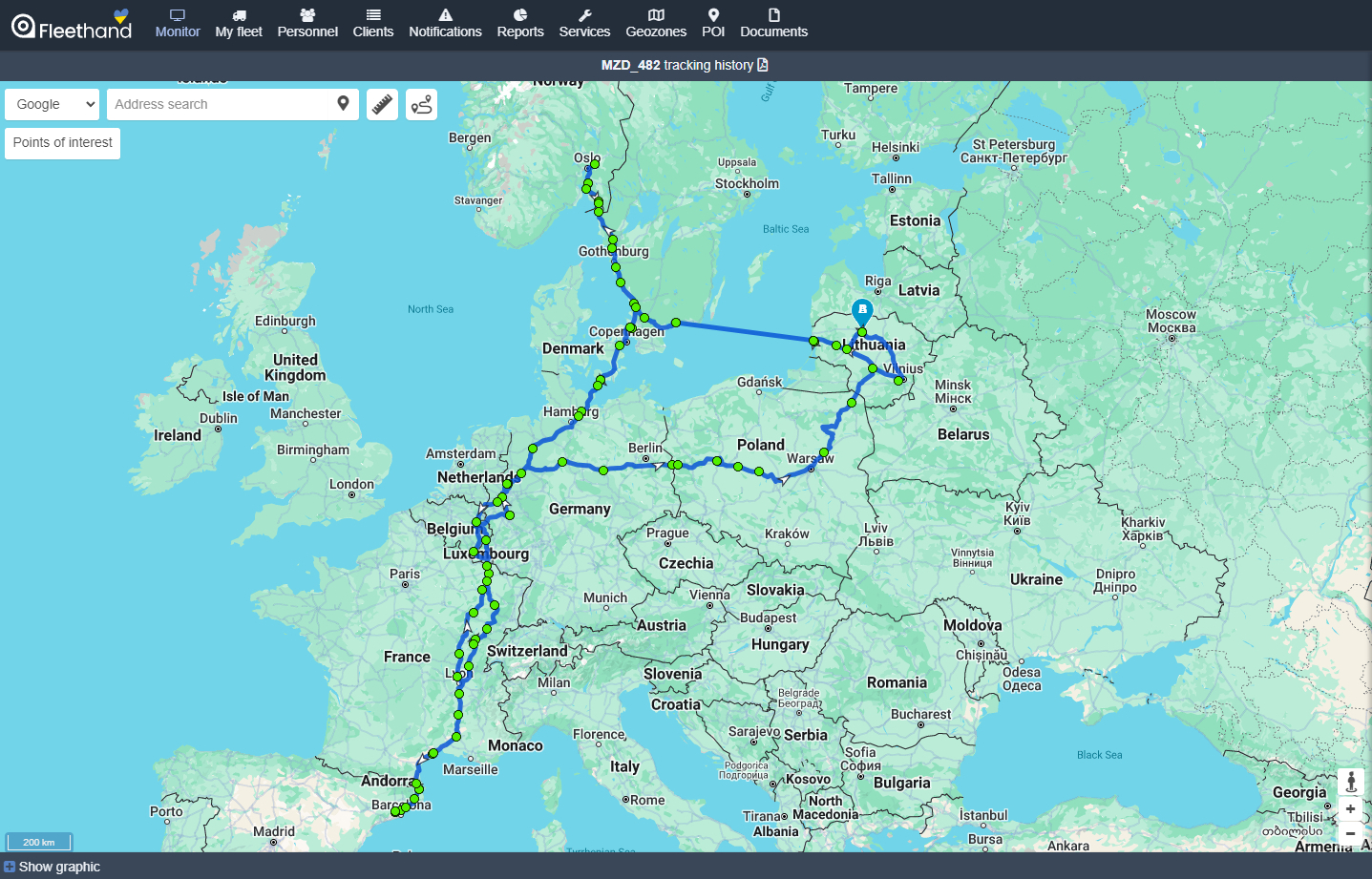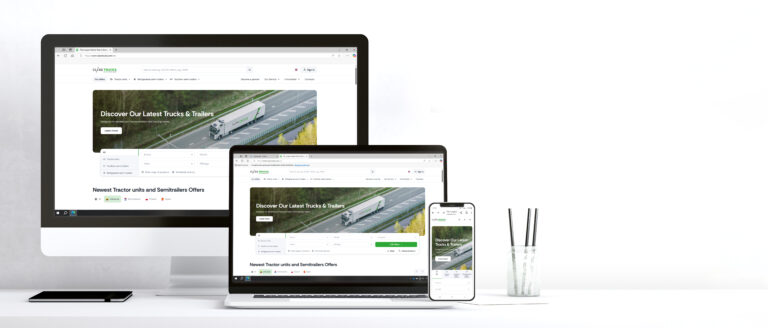Share it:
Driving 7600 km through 11 days, consuming on average 27 litres per 100 km. That’s just a small glimpse of all analysed data during Mindaugas Paulauskas, CEO of Girteka Transport, trip. Despite several experiences, shared knowledge and conclusions, conversations with other drivers, or discussions on social media, the Mindaugas On The Road project also provided a lot of data about performance, the trip itself, and both drivers driving skills. So how did Mindaugas Paulauskas perform during his first cargo delivery and what he did do?
The outcome of the trip
The main purpose of the whole project was to be closer to drivers’ daily lives, to understand them, and to face challenges and opportunities. Throughout the trip, Mindaugas and Sergey recorded more than 8 hours of raw video materials, including interviews with drivers, recordings from parking places, facilities, road traffic, daily tasks, and so on. The outcome is almost 40 videos covering the whole trip of Mindaugas bringing closer to everyone the life of those hidden heroes. All the videos are available on a specially dedicated website www.girteadrivers.com/motr.
Yet despite video series that were constantly shared, presenting day by day the whole trip, Mindaugas’ task was in fact to deliver cargo for customers. He was facing challenges with deliveries on time, preparing the truck, fuelling and eco-driving challenges, securing conditions for cargo, and coping with customs. During the trip, he faced issues with a lack of facilities, cold water in showers, or crowded parking places, recorded in detail in video series available on Girteka Group’s YouTube channel.
Constant monitoring
Through 11 days of the trip, Mindaugas Paulauskas and Sergey Kovalev drove for 7600 kilometers, visiting 10 countries, and were constantly monitored in real-time as all Girteka’s trucks. “Thanks to Telematica and Fleethand software solutions we can constantly monitor the trucks. Not only to have clear information about the place of the cargo, its conditions, but also the performance of drivers, including technical engine issues and eco score,” says Dainius Augutis, Transport Function Support Department Manager at Girteka.
Throughout the whole trip, both Mindaugas and Sergey delivered cargo, adapting their performance to the road situation, traffic, timing, and so on. Finally, they traveled 2800 kilometres at speeds below 80 and over 4400 kilometres at speeds between 81 and 83 km per hour. Throughout the entire trip, they emitted 3.900 kilograms of CO2, receiving 90 points on a 100 eco score scale. This is a very good result, taking into consideration the level of experience from Mindaugas.
Possibility to improve
“Within eco score, we analysed several indicators like rolling distance, engine loading, cruise control using or idling. Based on that system counts each driver’s performance separately and provides them with constant information on their performance through mobile phones so they can easily adjust the way how they drive,” explains Karolina Žekaitė, Training Center Manager at Girteka.
Although it was the first long-haul trip for Mindaugas Paulauskas, he managed to acquire a platinum score in eco-driving, which means reducing emissions at a very high level.
“Why this is important? Having a few thousand trucks and reducing their environmental impact even by 1-2% each truck, means a lot in total. So small steps for me, could be huge for the whole sector. And that is why I wanted to try it by myself and test it. And what was important for me as well, to prove that even a trainee driver can do that,” emphasizes Mindaugas Paulauskas.
Valuable insights
Reflecting on Mindaugas Paulauskas’ journey of 7600 km, it’s clear this trip was more than just driving. It was about getting a real look at what truck drivers go through every day. Mindaugas’ trip, shown in many videos, helped everyone see the life of drivers up close, sharing the ups and downs they face on the road. This wasn’t just about delivering goods; it was about showing the real side of truck driving and making it more appealing to people.
Through his experience, we learn how important drivers are, not just for their companies but for everyone who relies on the goods they deliver. His journey helps us appreciate the driver’s job more, showing it as a career full of real experiences and challenges, worth respecting and understanding. This story shows the company’s responsibility and care for the drivers, making their work seem more interesting and important, yet understanding them through practicality.



